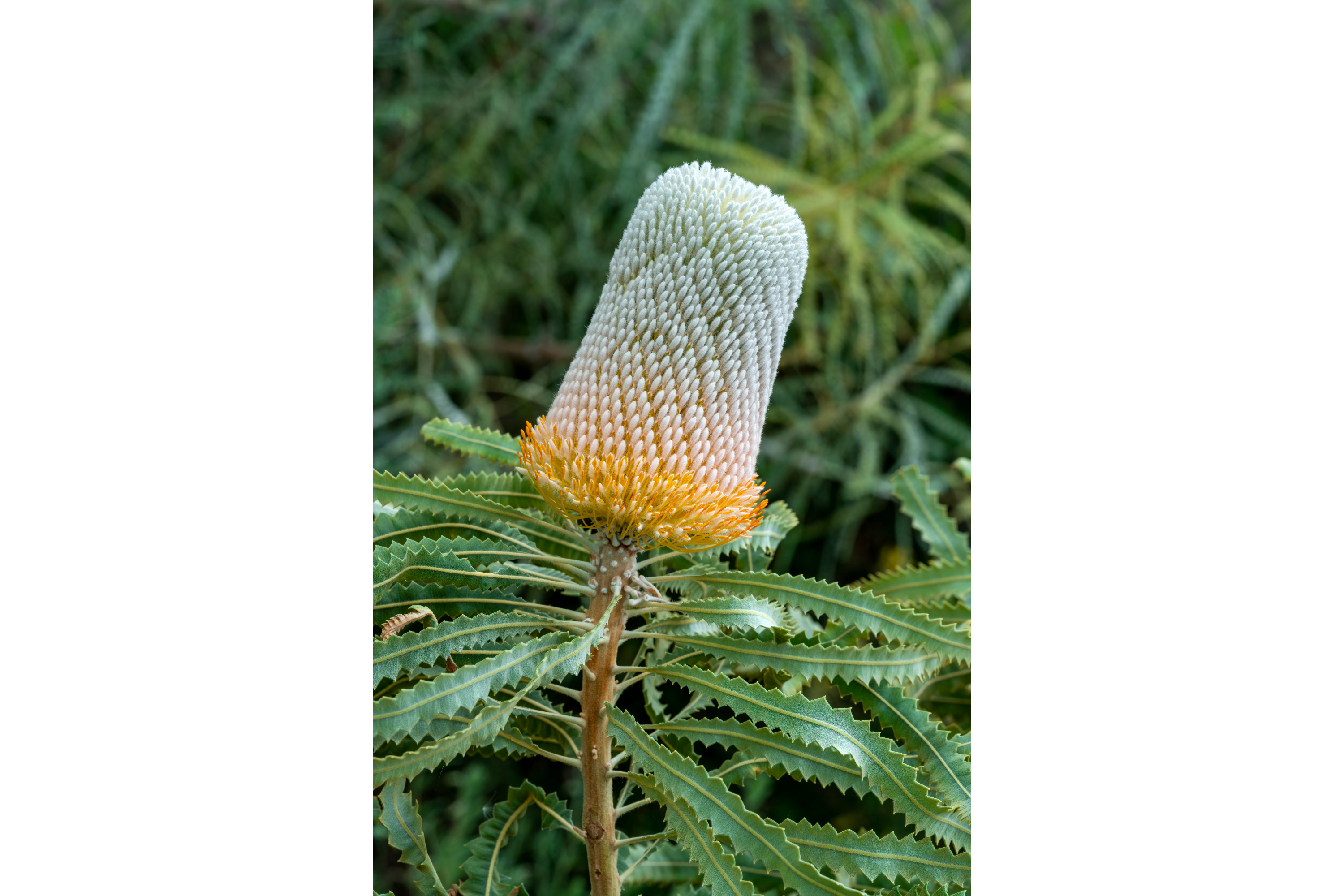Acorn banksia
(Banksia prionotes)

Description
Banksia prionotes, commonly known as acorn banksia or orange banksia, is a species of shrub or tree of the genus Banksia in the family Proteaceae. It is native to the southwest of Western Australia and can reach up to 10 m (33 ft) in height. It can be much smaller in more exposed areas or in the north of its range. This species has serrated, dull green leaves and large, bright flower spikes, initially white before opening to a bright orange. Its common name arises from the partly opened inflorescence, which is shaped like an acorn. The tree is a popular garden plant and also of importance to the cut flower industry. Banksia prionotes was first described in 1840 by English botanist John Lindley, probably from material collected by James Drummond the previous year. There are no recognised varieties, although it has been known to hybridise with Banksia hookeriana. Widely distributed in south-west Western Australia, B. prionotes is found from Shark Bay (25° S) in the north, south as far as Kojonup (33°50′S). It grows exclusively in sandy soils, and is usually the dominant plant in scrubland or low woodland. Pollinated by birds, it provides food for a wide array of vertebrate and invertebrate animals in the autumn and winter months. It is an important source of food for honeyeaters (Meliphagidae), and is critical to their survival in the Avon Wheatbelt region, where it is the only nectar-producing plant in flower at some times of the year. Banksia prionotes grows as a tree up to 10 m (30 ft) high in southern parts of its distribution, but in northern parts it is usually a shorter tree or spreading shrub, reaching about 4 m (13 ft) in height; it diminishes in size as the climate becomes warmer and drier further north. It has thin, mottled grey, smooth or grooved bark, and tomentose young stems. The alternate dull green leaves are 15–27 cm (6–11 in) long, and 1–2 centimetres (1⁄3–2⁄3 in) wide, with toothed leaf margins made up of triangular lobes, and often a wavy surface. Flowers occur in a typical Banksia flower spike, an inflorescence made up of hundreds of small individual flowers, or florets, densely packed around a cylindrical axis. B. prionotes has cream-coloured flowers with a bright orange limb that is not revealed until the flower fully opens. Known as anthesis, this process sweeps through the inflorescence from bottom to top over a period of days, creating the effect of a cream inflorescence that progressively turns bright orange.
Taxonomic tree:







